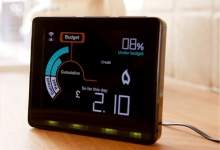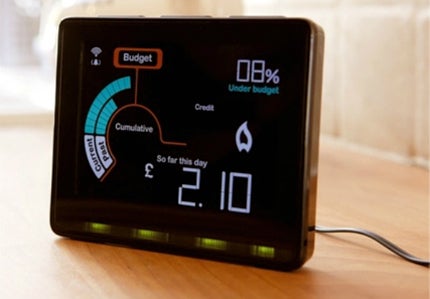

The way consumers and utility companies manage residential and some commercial energy intake is about to undergo a major switch-up. Old fashioned meters will eventually become a minority with compact wireless smart meters becoming ubiquitous.
The US is already underway with its smart meter programme, with, according to the US Energy Information Administration’s website, 493 US electric utilities rolling out 37,290,374 advanced ‘smart’ metering infrastructure (AMI) installations in 2011.
EU countries are under a mandate to connect 80% of residential homes to smart meters no later than 2020, with the UK planning to get its programme underway in 2015.
Japan and China are also piloting their own smart grid programmes.
Smart meters are different from regular, or ‘dumb’, meters, as they are often referred to, because they provide constant and accurate data from the device to the utility company via wireless transmission. This eliminates estimated bills and the need for consumers or employed meter readers to manually take recordings.
But more than this, they provide detailed information about where and how much energy is used at what different times of the day. This is data that policy makers hope will result in consumers adapting their energy habits to achieve reduced energy use at peak times, taking pressure off the grid and reducing bills.
David Fatscher, head of Market Development for Sustainability at the British Standards Institution, believes some consumers will really want to take advantage of the information smart meters offer.
"In the same way as modern telecommunications systems, it should be envisaged that many consumers will be happy to use the original basic smart meters as installed on behalf of utility companies, but others will want to extend the use to full capacity, including reviewing tariffs in real time and managing their domestic energy use remotely," he said.
Although not everyone is convinced by the potential of the ‘smart’ revolution – a recent report by Ernst & Young on behalf of the German Federal Ministry of Economics said savings from smart meters do not justify the costs, especially for residential customers – the Western world’s preoccupation with data and its concern for reducing energy emissions and incorporating more renewable energy to the grid will no doubt ensure consumers that analysing their energy use at home will become common place in the not too distant future. In anticipation, we round up the current technology options available on the market.
E.ON’s Smart Energy Display
This device created by Germany-based E.ON remotely interacts with a consumer’s smart meter and then feeds information directly to them.
The idea of the Smart Energy Display is to remove the need for estimated bills and a meter reading service, while enabling the customer to spot where they can make savings and be more efficient.
The device can sit anywhere in the home as it works entirely wirelessly. It provides information to the customer about how much electricity and gas they are using, in real time or in the last couple of weeks, months or year. It also includes a guide to how much usage is costing and how much CO2 is being omitted.
Its traffic light system simplifies this for the consumer; green (good) is less than 150mw being used, amber (slightly high) is between 150W and 1,000W (1kW) and red (bad) for more than 1,000W (1kW).
Tendril Insight
Insight by Tendril, which is based in Boulder, Colorado, in the US, is also an in home display (IHD) device that aims to inform the consumer in order to positively influence their energy use. It communicates with networked smart devices, such as thermostats, electricity meters and outlets, and displays information about energy consumption, rates and cost of use.
Tendril says the device can "improve energy efficiency, drive demand response, and reduce customer service incidents."
The company takes interaction further by communicating with customers via text messages and other visual alerts to warn them about load control and pricing events, rebate opportunities and tips on how to help reduce cost and load during peak demand periods.
Consumers can also set personal alerts to help them manage energy use more efficiently. These programmable alerts notify the user when price, household usage, monthly bill, or cost-per-hour exceeds a specified limit.
Customers can also compare daily cost of electricity and track bills, among other things.
Tenderil recently partnered with Hitachi, to develop more smart energy home solutions.
Nest’s Auto-Tune
Nest introduced the Nest Leaf or Auto-Away, both IHDs, which provided their customers with energy usage information. The company, based in Palo Alto in the US, took its energy information services further by introducing two separate schemes, called Rush Hour Rewards and Seasonal Savings, powered by what they call Auto-Tune.
Customers of Nest’s energy partners, Reliant, Green Mountain Energy, Austin Energy and Southern California Edison, can sign up to either programme to help them reduce their energy consumption and save money.
The first does this by taking advantage of energy companies’ incentives that pay customers to use less energy when everyone else is using more. Nest says consumers can make up to $20-$60 by doing this. The second uses everything the company has learned about the customer to decrease their energy needs at times of peak demand, hopefully without affecting their comfort, reducing their overall bills.
However, if the customer wants to change temperature settings, for example, at any time because they are not comfortable, they can do so.
In trials Nest owners used five to ten percent less heating and cooling with Seasonal Savings and 80% said they’d keep their tuned-up schedules after Seasonal Savings ended.
Siemens’ metering, communications and services for businesses
Although businesses are not included in the EU mandatory smart meter roll out, Siemens, which says it is the leading independent provider of metering services in the UK, has a Metering, Communication and Services offering for businesses.
The service offers to help businesses rein in their energy spending by fitting Siemens smart meters, which can operate as a stand alone meter or as part of a complex metering system. The meters collect data at source every half an hour and are sent to the business’s energy company, who will then have an accurate meter reading, as opposed to an estimated one.
Companies can also use Siemens’s Sie-Smart technology, which enables energy data to be consumed via an easy-to-understand graphical interface.
It allows alerts to be set for consumption levels above and below "user set trigger levels" and for companies to compare it across many different sites or the same site over multiple periods, in order to forecast future energy use.
The Watt Box
The Watt Box, developed by engineers at De Montfort University and supported by EPSRC and E.ON Strategic Partnership, is a device that monitors household use of hot water and electrical equipment and ‘learns’ habits. It then uses the information to create a thermostat schedule which responds to outdoor heat.
"When we started the Wattbox project we had two main aims: to design an intelligent automated energy management system and to make it very easy to use and understand.
"By taking the complexity out of the controls, we estimate energy use on heating and hot water alone could be reduced by up to 14%," said Peter Boait, Wattbox director and senior research fellow at De Montfort University.
The Wattbox heats water just before it is needed, preventing energy wastage, and displays a red light when hot water is available. Users can push a button for more heat or less heat if they choose.
The device is fitted by replacing a boiler’s time clock and thermostat which is connected using existing wiring schemes. A smart meter display registers data, such as electricity and gas consumption, the company can also provide an optional use display for home computers and mobile phones.
As part of the research into the Watt Box, a working prototype was fitted to a UK home and provided overall energy savings of 15.7% during winter and 34% during summer months.
Loop
Launched this year, Loop, created by UK energy management company Navetas, promises to be a consumer’s ‘personal energy assistant’.
The simple device, which is designed to be set up in less than five minutes, gives customers access to all their energy information – cost and amount of energy used, CO2 – at any time, anywhere, by logging onto an online account.
"Loop gives you everything you need to make the right energy choices, from up to the minute usage information on what you are really using, right through to knowing when you can and should switch to get a better deal," said Chris Saunders, CEO at Navetas, the company behind Loop.
As well as allowing consumers to view their energy information and letting them set targets, its unique feature is its collaboration with price comparison site uSwitch, which enables the user to see how much their energy use would cost them on other energy companies’ tariffs.
"Everyone uses energy but not everyone knows what a kilowatt is or how much 10kWh should cost. This makes it difficult for consumers to really understand their bills or to change how they use energy," Saunders adds.
Related content
UK smart meter roll-out – what should households expect?
The Energy and Climate Change Committee issued a report last week on the smart meter roll-out that is set to begin in 2015 and reach completion in 2020.
Pocket rocket – a new generation of small modular reactors
A new generation of small modular nuclear reactors could offer flexible, cost-effective alternatives to energy production.


.gif)

